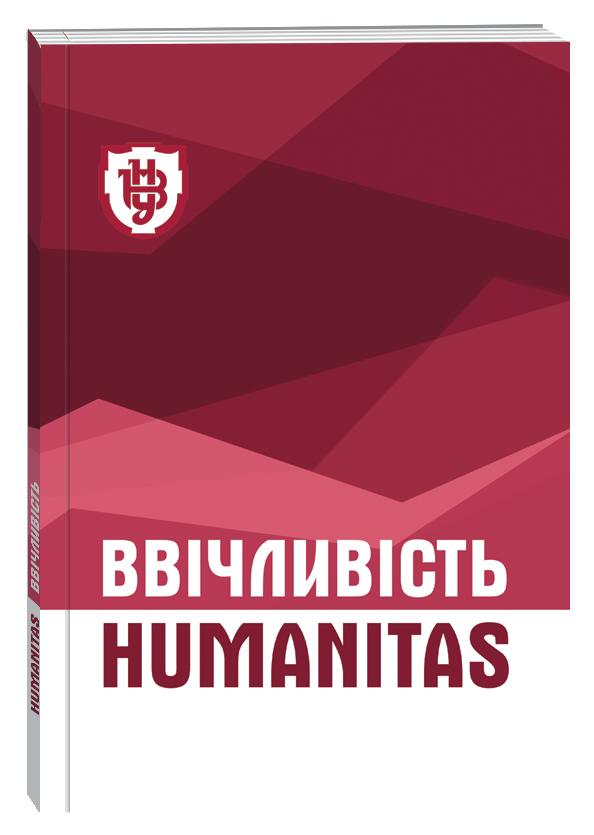TECHNOLOGIES OF VIRTUAL AND AUGMENTED REALITY IN AN INCLUSIVE ENVIRONMENT: PSYCHOSOCIAL CORRECTIVE PRACTICE IN WORKING WITH CHILDREN WITH DISABILITIES
DOI:
https://doi.org/10.32782/humanitas/2025.4.16Keywords:
inclusive environment, social work, virtual reality, augmented reality, psychosocial corrective practice, children with disabilitiesAbstract
The purpose of the article is to comprehensively examine the potential of virtual reality (VR) and augmented reality (AR) technologies in inclusive educational and social environments as effective tools of psychosocial corrective practice in working with children with disabilities. Special attention is given to defining the role of VR/AR in overcoming the limitations of traditional methods of social work, psycho-correction, and rehabilitation, as well as in developing communication, social, and life skills, enhancing motivation, and providing emotional support to children with special educational needs. Methodology. The study is based on an interdisciplinary approach that integrates theoretical analysis of scientific sources in social work, pedagogy, psychology, and medical sciences. Methods of comparative analysis, systematization, and synthesis of current empirical studies on the application of VR/AR in social practice are employed. Practical cases of using VR/AR in international experience of social and educational integration of children with disabilities are also considered. Scientific novelty. For the first time, the feasibility of applying VR/AR technologies in the context of psychosocial corrective practice in inclusive environments is systematically substantiated. It is shown that VR/AR create a safe and controlled space where real-life situations can be simulated, ensuring active engagement of children in learning and socialization processes. The interdisciplinary nature of VR/AR technologies is emphasized, combining pedagogical, psychological, and social instruments and forming new opportunities for personal development. Conclusions. It is concluded that VR/AR technologies cannot fully replace traditional methods of social work and rehabilitation; however, they significantly expand the toolkit of inclusive practice. The use of immersive technologies contributes to enhancing motivation, developing adaptive and socialization skills of children with special educational needs, and strengthening their psychological resilience. Prospects for further research are identified, particularly the development of efficiency criteria for VR/AR interventions and the study of their impact on different target groups.
References
Бакалюк Т. Г., Віцентович М. В., Стельмах Г. О., Блажеєв Д. О. Телереабілітаційні технології в реабілітації дітей із руховими порушеннями. Вісник соціальної гігієни та організації охорони здоров’я України. 2024. № 1 (99). С. 89–94. DOI: https://doi.org/10.11603/1681-2786.2024.1.14630.
Кравченко О. О., Міщенко М. С. Інноваційний проєкт комплексної реабілітації: використання віртуальної (VR) і додаткової (AR) реальностей у сучасній освіті. Освітній дискурс. 2022. № 2(7). С. 880–891. DOI: https://doi.org/10.52058/2786-4952-2022-2(7)-880-891.
Кривонос М. П., Мінгальова Ю. І. Інноваційні техніки роботи з дітьми з особливими освітніми потребами. Наукові записки. Серія : Педагогічні науки. Національний університет «Чернігівський колегіум» ім. Т. Г. Шевченка. 2023.
Мельничук І. Я., Близнюкова О. М. Основи психокорекції : навч.-метод. посіб. Кропивницький : Кіровоград. держ. пед. ун-т ім. В. Винниченка, 2018. 152 с.
Попов О. А. Імерсивні технології у практичній соціальній роботі. Наукові записки Університету «Україна». Серія: Соціальна робота. 2024. Вип. 99. С. 83–91. DOI: https://doi.org/10.31392/UDU-nc.series5.2024.99.11.
Ткачова Н. Г., Булаш І. В., Турчина І. С. Інноваційні техніки роботи з дітьми з особливими освітніми потребами. Наукові записки. Серія: Педагогічні науки. Національний університет «Чернігівський колегіум» ім. Т. Г. Шевченка. 2023.
Шалкевич Л. В. Застосування технологій віртуальної реальності для збільшення супінації в руці у пацієнтів зі спастичними формами дитячого церебрального паралічу. Journal of the Grodno State Medical University. 2020. Т. 18, № 6. URL: https://paper.researchbib.com/view/paper/270082 (дата звернення: 24.08.2025).
The Gard. AR Book для інклюзивної освіти: доступ до знань для всіх. URL: https://thegard.city/articles/305062/ar-book-dlya-inklyuzivnoi-osviti-dostup-do-znan-dlya-vsi.html (дата звернення: 24.08.2025).
Закон України «Про освіту» від 05.09.2017 № 2145-VIII. Відомості Верховної Ради України. 2017. № 38. Ст. 380.
Dick E. Current and potential uses of AR/VR for equity and inclusion. Information Technology & Innovation Foundation. 2021. 1 June. URL: https://itif.org/publications/2021/06/01/current-and-potential-uses-arvr-equity-and-inclusion/
Gaggioli A. et al. Empirical Virtual Scenarios With Real-Time Monitoring (Interreality) for the Management of Psychological Stress: A Block-Randomized Controlled Trial. Journal of Medical Internet Research. 2014. Т. 16, № 7. DOI: https://doi.org/10.2196/jmir.3235.
Rutledge T., Velez D., Depp C. et al. Virtual Reality Interventions for the Treatment of Phantom Limb Pain: A Review of Development and Feasibility Findings. Pain Medicine. 2019. Т. 20, вип. 10. С. 2051–2059. DOI: https://doi.org/10.1093/pm/pnz121
Zoccolillo L., Morelli D., Cincotti F., Muzzioli L., Gobbetti T., Paolucci S., Iosa,M. Video-game based therapy performed by children with cerebral palsy: a cross-over randomized controlled trial and a cross-sectional quantitative measure of physical activity. European Journal of Physical and Rehabilitation Medicine. 2015. 51(6). С. 669–676.








